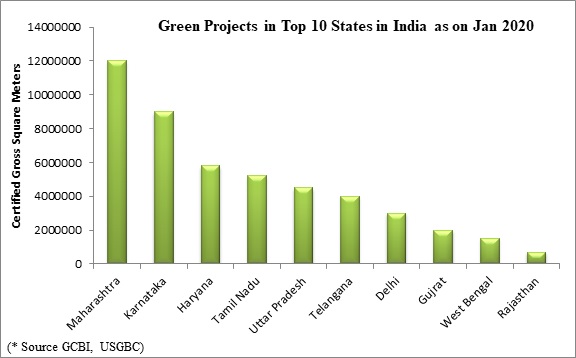Green Building Design Concept: A Sustainable Approach

DOI:
https://doi.org/10.54060/JMCE/002.01.003Keywords:
Green Building, Heritage Structures, passive heating and coolingAbstract
In this communication, Author has deliberately presented the Green building concept. Green Building is the building which does not required any commercial electricity for the building conditioning. The conditioning means it has sufficient mass flow rate of air, no pollution accu-mulated inside the building, no extra heat is absorbed by the building and no extra cooling is available inside the building. The building is working in the comfort conditioning zone such as the temperature inside the building lies from 16 to 25 degree Celsius. The Aura of building, LEED Rating of building and comfort conditioning through solar chimney, EATHE, BHE and their integrated approaches has been presented. The ACH for normal and Covid-2 type situation being also discussed.
Downloads
References
World Green Building Council. https://www.worldgbc.org/. [Accessed: 1-4-2022].
With Only 4% Green Buildings, India Suffers from Tech and Funding Barriers: Survey. Conducted by: Johnson Controls, an Ireland-based multinational, March 18, 2019, https://mercomindia.com/with-4-percent-green-buildings-india-barriers/ [Accessed: 7-4-2022].
K. Bhatt, “India has achieved 75% of the ‘Green Building Footprint’ target in 2020,” Times Now, 07-Aug-2020. [Online]. https://www.timesnownews.com/business-economy/real-estate/article/india-has-achieved-75-of-the-green-building-footprint-target-in/633584. [Accessed: 8-4-2022].
S. M. Geelani et al., “Green building development for sustainable environment with special reference to India,” International Journal of Environment and Bioenergy, vol. -4, no. 2, pp. 86-100, 2012.
P. Macnaughton et al., “Energy savings, emission reductions, and health co-benefits of the green building movement,” J. Expo. Sci. Environ. Epidemiol., vol. 28, no. 4, pp. 307–318, 2018.
C.-R. Yu, H.-S. Guo, Q.-C. Wang, and R.-D. Chang, “Revealing the impacts of passive cooling techniques on building energy performance: A residential case in Hong Kong,” Appl. Sci. (Basel), vol. 10, no. 12, 2020.
K. Vyas and D. Sharma, “Architectural and technical approach for self-sustainable building,” International Journal of Scientific Engineering and Technology, vol. 6, no. 3, pp. 275-278, 2017.
S. Lal, “CFD simulation studies on integrated approach of solar chimney and earth air tunnel heat exchanger for building space conditioning,” Int. J. Econ. Energy Environ., vol. 2, no. 3, p. 32-39, 2017.
M. J. Finnegan and C. A. C. Pickering, “Building related illness,” Clin. Exp. Allergy, vol. 16, no. 5, pp. 389–405, 1986.
Role of glass in green buildings. https://www.aisglass.com/technical-guide/resource-center/role-of-glass-in-green-buildings. [Accessed: 8-4-2022].
S. Lal, S. C. Kaushik, and P. K. Bhargava, “A case study on solar chimney-assisted ventilation for residential building in India,” Int. J. Energy Sect. Manag., vol. 7, no. 4, pp. 478–490, 2013.
R. Sharma, “Centre issues new indoor ventilation guidelines in wake of Covid,” The New Indian Express, https://www.newindianexpress.com/nation/2021/may/19/centre-issues-new-indoor-ventilation-guidelines-in-wake-of-covid-2304717.html [Accessed: 8-4-2022].
S. Lal, S. C. Kaushik, P. K. Bhargava, “Solar Chimney: A Sustainable Approach for Ventilation and Building Space Conditioning”, International journal of Development and Sustainability, vol. 2, no. 1, pp. 277-297, 2013.
S. Lal., “CFD simulation for feasibility study of a modified solar chimney applied for building space heating”, World Journal of Modelling and Simulation, vol. 10, no. 4, pp. 293-307, 2014.
S. Lal, “CFD simulation and parametric studies on modified solar chimney for building ventilation”, Applied solar energy (Springer) vol. 50, no. 1, pp. 37-43, 2014. DOI: 10.3103/S0003701X14010125
S. Lal, S.C. Kaushik, P.K. Bhargava, N.B. Balam, “Building Space Heating through Modified Trombe Wall: An experimental Study”. International conference on smart technologies for mechanical engineering, October 25-26, 2013, pp. 944-949.
S. C. Kaushik, S. Lal, and P. K. Bhargava, “Earth–air tunnel heat exchanger for building space conditioning: a critical review,” Nanomater. energy, vol. 2, no. 4, pp. 216–227, 2013.
S. C. Kaushik, T. Garg, and S. Lal, “Thermal performance prediction and energy conservation potential of earth air tunnel heat exchanger for thermal comfort in building,” J. Renew. Sustain. Energy, vol. 6, no. 1, pp. 1-12, 2014.
S. Lal, N. Babu Balam, and H. K. Jain, “Performance evaluation, energy conservation potential, and parametric study of borehole heat exchanger for space cooling in building,” J. Renew. Sustain. Energy, vol. 6, no. 2, pp. 1-12, 2014.
S. Lal and S. C. Kaushik, “Comparative study of earth air tunnel and borehole heat exchanger applied for building space conditioning,” in Lecture Notes in Civil Engineering, Singapore: Springer Singapore, 2020, pp. 1–12.
S. Lal, S.C. Kaushik, “CFD Simulation Studies on Integrated Approach of Solar Chimney and Earth Air Tunnel Heat Exchanger for Building Space Conditioning”. International Journal of Economy, Energy and Environment vol. 2, no. 3, pp. 32-39., 2017. doi: 10.11648/j.ijeee.20170203.11
S. Lal and S. C. Kaushik, “CFD simulation studies on integrated approach of solar chimney and borehole heat exchanger for building space conditioning,” Period. Polytech. Mech. Eng., vol. 62, no. 4, pp. 255–260, 2018.
Could the aura of your home be affecting your health? https://www.thehealthsite.com/diseases-conditions/could-the-aura-of-your-home-be-affecting-your-health-60087, [Accessed: 8-4-2022].
What if we could measure your energy field? https://www.melbournearthritis.com.au/blog/what-if-we-could-measure-your-energy-field-20094.html, [Accessed: 7-4-2022].
Universal Aura Scanner, https://vedicauraenergy.com/universal-aura-scanner. [Accessed: 8-4-2022].
Chapter three: Green building methods and materials, Albanyca.org. https://www.albanyca.org/home/showdocument?id=391. [Accessed: 6-4-2022].
L. Li, P. Wang, H. Wang, and M. Zhang, “Green building materials evaluation and empirical research based on the regional endowment,” AASRI Procedia, vol. 3, pp. 381–386, 2012.
R. Gupta, S. Lal, R. Rajora, R. Rajora, “Experimental evaluation of daylight in a classroom at Rajasthan Technical University Kota, India”, In: International conference on Advances in power generation from renewable energy sources, 15-16 June, 2015, pp 29-35.
S. Lal, H. Kumar, D. Prasad and R. Rajora, “Photovoltaic System Design for a Government School in Alwar, Rajasthan”, In: International conference on Advances in power generation from renewable energy sources, 15-16 June, 2015, pp. 296-308.
S. Lal, P. Verma, R. Rajora, “Performance analysis of photovoltaic based submersible water pump”, International journal of engineering and technology, vol. 5, issue 2, pp. 552-560, 2013.
S. Lal, “Techno-economic analysis of solar photovoltaic based submersible water pumping system for rural areas of an Indian state Rajasthan,” Sci. J. Energy Eng., vol. 1, no. 1, p. 1, 2013.
S. Lal, S. C. Kaushik, and P. K. Bhargava, “A case study on solar chimney-assisted ventilation for residential building in India,” Int. J. Energy Sect. Manag., vol. 7, no. 4, pp. 478–490, 2013.
R. Sharma, “Centre issues new indoor ventilation guidelines in wake of Covid,” The New Indian Express, The New Indian Express, [Accessed: 1-4-2022].
Green building, Wikipedia, The Free Encyclopedia. https://en.wikipedia.org/w/index.php?title=Green_building&oldid=1097360686, [Accessed: 8-4-2022].
Life-cycle assessment, Wikipedia, The Free Encyclopedia. https://en.wikipedia.org/w/index.php?title=Life-cycle_assessment&oldid=1098891755 [Accessed: 8-4-2022].


























